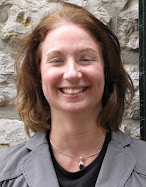





Ratchaburi
Wow! An incredibly jam-packed day.
After the usual all-you-ever-hoped-to-eat-and-then-some breakfasts at our hosts homes we set out for the Kubia Prehistorical Museum. This museum housed an amazing collection, some of which was more modern than the name of the museum would indicate, of life sized (and life-like) mannequins of people, depicting the history of the migrations of cultures into what is now Thailand. As you rounded each corner you would come face-to-face with people from different eras arranged in situation settings. You almost wanted to say, "Sawahtee krup" ("good morning") to them.
At the museum we were treated to a dance performance of traditional Thai dance by a teacher and his students. After a beautiful dance where the performers held lit candles n each hand, weaving them behind their back and around their arms, the instructor invited our team to join him in a tamer dance, this time holding fans rather than candles. Upholding the dignity of District 7570 the team responded affirmatively and performed admirably.
The museum is parially supported by the sale of beautiful hand-woven silk fabrics and, although we already have fully loaded suitcases, some of the team added to their collections.
We next proceeded to the Ratchabury National Museum which contains historic and archeological treasures from prehistoric through Dvaravati (7th century), Khymer (12th and 13th centuries, Sukhothai-Thonburi (1370-1767) and Rattanakosin (1767-1932). These later two periods each ended as a result of waefare, first with Burma and then with Japan. The museum also contained exhibits on Ratchaburis cultural and natural heritage, famous people in Ratchaburi history and Ratchaburi today.
Unfortunately, we were not permitted to bring our cameras into the museum, so if you want to enjoy it, you will have to visit Ratchaburi yourself.
After lunch at the Rotary club of Ratchaburi, we attended their meeting. Rotary club meetings in Thailand are very different than those that I have attended in the USA. The officers sit at a head table, the President looking very official wearing his presidential medalion around his necxk. The other officers also sit at the head table with the primary chairs sitting at long tables perpendicular to the head table. Each officer or chair has a rather large name plate in front of him, with his name and position indicated. The rest of the members sit on chairs behind the primary chair holders. The meeting starts with the singing of the Thai National Anthem (about a sinaable as our own) and ends with the singing of the Rotary song, to the tune of Disney's "It's a small world after all".
We next visited the Aran-yik temple, scene of a huge stone reclining Buddha, which was mostly covered with drop cloths because of repair work being performed on it. An old, bald, toothless nun sold incense sticks and small pieces of gold leaf, which we attached to the Buddha. As we burned the incense, the nun offered prayers for our health, long-lives and happiness. The adjacent tower, which was the actual temple, though in poor condition, added to the austerity of the occasion.
After a brief rest stop at our hosts' homes, we gathered again in diming light of early evening at the Khao Chonhpran bat cave. There, more than one million bats all swarm out of huge cave. The sky is completely filled with bats, like the world's largest flock of starlings. There are so many bats, it takes a full hour for them all to leave the cave, only to return again each dawn.
Our final activity was dinner at a restaurant, with the entire team, their hosts, and sorted other Rotarians. After eating ourselves silly, we finally were able to call it a day.










No comments:
Post a Comment